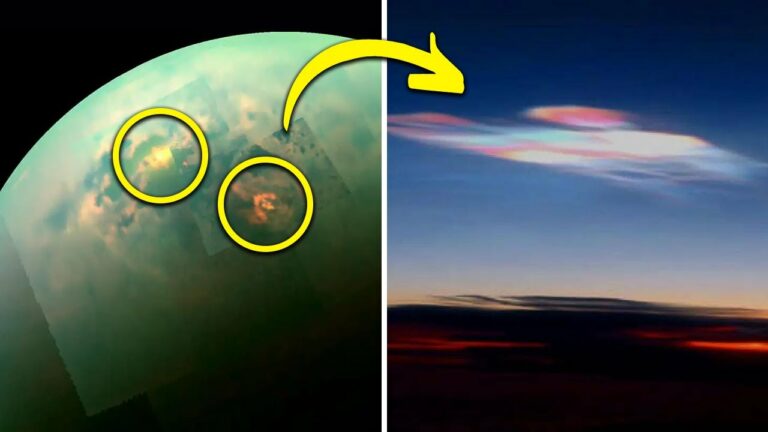NASA Discovers SHOCKING Secrets of Titan’s Thick Atmosphere
Titan is the largest moon of Saturn and holds the distinction of being the second-largest moon in our solar system. This intriguing celestial body has captivated scientists and space enthusiasts alike due to its distinctive features, complex atmosphere, and potential clues about the early conditions of our solar system.
One of Titan’s most notable characteristics is its thick atmosphere, which is primarily composed of nitrogen, with trace amounts of methane and hydrogen. This hazy atmosphere is thought to resemble the early Earth, making Titan a valuable celestial laboratory for studying planetary processes and atmospheric dynamics.
The moon’s surface is a landscape of diverse and enigmatic features. Titan boasts large seas, lakes, and rivers, but unlike Earth, these are not composed of water. Instead, they consist of liquid methane and ethane, creating a unique hydrological cycle. Vast sand dunes and icy mountains further contribute to the complexity of Titan’s terrain.
Titan’s atmosphere and surface have been explored through the Cassini-Huygens mission. The Huygens probe, part of this mission, successfully landed on Titan in 2005, providing crucial data about its atmosphere and surface. The Cassini spacecraft, which carried the Huygens probe, conducted extensive observations of Titan until the end of the mission in 2017.
This moon’s rich organic chemistry is of particular interest, with complex organic molecules detected on its surface. Some scientists speculate that Titan’s conditions may offer insights into the prebiotic chemistry that could have occurred on Earth before life emerged.
In summary, Titan stands as a captivating celestial body that continues to unveil its mysteries, offering a unique window into the processes shaping planetary bodies and contributing valuable knowledge to our understanding of the broader cosmos.
Do not forget to share your opinion with us to provide you with the best posts !




0 Comments